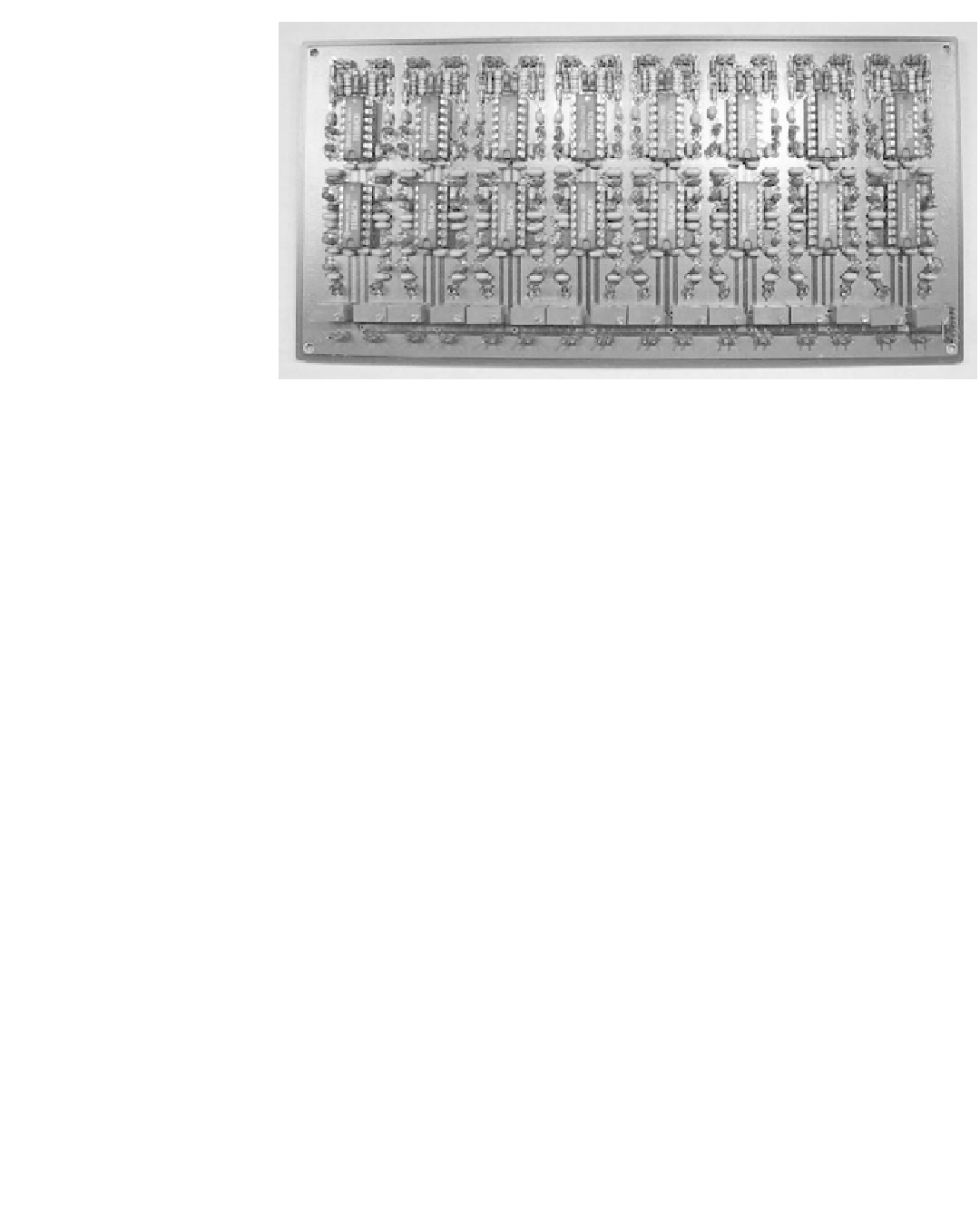Biomedical Engineering Reference
In-Depth Information
Figure 1.16
Array of 16 single-ended biopotential amplifiers. A number of these circuits may be
stacked up to form very large arrays, making them ideally suited for applications such as body poten-
tial mapping electrocardiography.
The last processing stage of each channel is an active notch
filter, which can be tuned to
the power line frequency by adjusting R12. Supply voltage to this circuit must be sym-
metrical and within the range of
fi
5 V (minimum) to
18 V (absolute maximum). Two
9-V alkaline batteries can be used e
ciently due to the circuit's very low power con-
sumption. Capacitors C9-C12 are used to decouple the power supply and
fi
filter noise from
the op-amp power lines.
To minimize electrical interference, the circuit should be built with a compact layout on
an appropriate printed circuit board or small piece of stripboard. The construction of the
circuit is straightforward, but care must be taken to keep wiring as short and clean as pos-
sible. Leads to the bioelectrodes should be low-loss coaxial cables, whose shields are con-
nected to their respective shield drives at J1 (J1x-2 for left-side channels and J1y-1 for
right-side channels). The circuit's ground should be connected to the subject's reference
(
patient ground
) electrode. When connected to a test subject, the circuit must always be
powered from batteries or through a properly rated isolation power supply. The same iso-
lation requirements apply to the outputs of the ampli
er channels.
It is important to note that the performance of a complete system is determined prima-
rily by its input circuitry. Equivalent input noise is practically that of the
fi
fi
rst stage
(approximately 10
µ
V
p-p
within the ampli
fi
er's
3-dB bandwidth of 0.2 to 100 Hz).
BODY POTENTIAL DRIVERS
Rejection of common-mode signals in the prior circuit example is limited to the single-
ended performance of the input-stage op-amp and the 50/60-Hz rejection of the notch
filter.
Often, however, environmental noise (e.g., power line interference) is so large that com-
mon-mode potentials eclipse the weak biopotentials that can be picked up through single-
ended ampli
fi
fi
ers. Notch
fi
filters do not necessarily remove interfering signals in a substantial
manner either. The
first few harmonics of the power line constitute strong interfering sig-
nals in the recording of biopotentials. The range of these signals, however, is by no means
con
fi
fi
ned to 100 or 200 Hz. High-frequency interference originating from
fl
uorescent and
other high-e
ciency lamps commonly occurs with a maximal spectral density of approxi-
mately 1 kHz and with amplitudes of up to 50% of the 50/60-Hz harmonic.


Search WWH ::

Custom Search